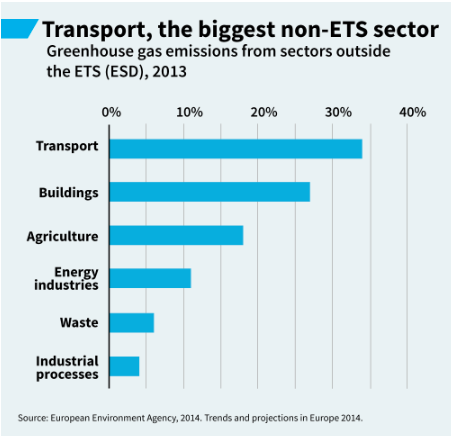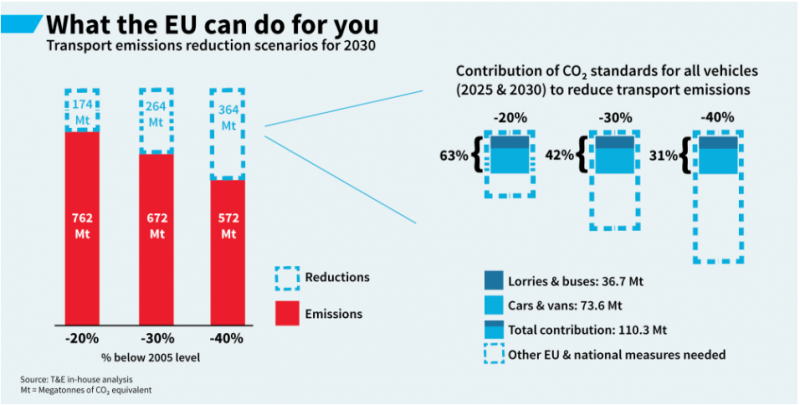Transport and Environment Briefing: EU Vehicle Emission Standards Are Essential to Meet the 2030 EU Emission Targets
A recent briefing by Transport and Environment titled ‘Road to 2030:How EU Vehicle Emission Standards help Member States Meet Climate Targets‘ shows that CO2 standards for new cars, vans and trucks are essential to meet the 2030 EU emission targets; depending on assumptions, they can close around half of the gap between targets and ‘business as usual’ trends, according to the study.
The paper attempts to quantify the challenge for EU member states in reducing transport emissions under the expected 2030 ‘effort sharing decision’ and the extent to which CO2 standards for cars, vans and trucks can help achieve those targets.
In October 2014 EU heads of state decided on new targets for the reduction of greenhouse gas emissions by 2030. Emissions under the EU emissions trading system (ETS) will have to fall by 43% from 2005 levels, and emissions outside the ETS – mainly transport, buildings and agriculture – by 30%. The latter target will be made legally binding on member states through a new so-called ‘effort sharing decision’ or ESD, for which the Commission will make a proposal in 2016.
 Transport is currently the biggest ESD sector (34%) and the Commission assumes that without additional action, transport emissions will roughly remain constant until 2030. The ESD proposal provides a unique opportunity to align EU transport policies with climate goals. Combining the setting of emissions reduction targets – under the ESD – with actual measures to reduce emissions can increase support for both.
Transport is currently the biggest ESD sector (34%) and the Commission assumes that without additional action, transport emissions will roughly remain constant until 2030. The ESD proposal provides a unique opportunity to align EU transport policies with climate goals. Combining the setting of emissions reduction targets – under the ESD – with actual measures to reduce emissions can increase support for both.

Transport and environment defined three possible 2030 targets for GHG emissions from the transport sector: -20, -30 and – 40% compared with 2005 levels. We then calculated to what extent improved vehicle efficiency could help meet these three targets, both at EU and at national level. This assessment rests on a number of assumptions, explained in the methodology section, and is not an exact calculation. It does, however, make it very clear what the impacts are of mandating, or not, improved vehicle efficiency.
The study’s key outcomes:
1) CO2 standards for new cars, vans and trucks are essential to meet the 2030 targets; depending on assumptions, they can close around half of the gap between targets and ‘business as usual’ trends.
2) Apart from the stringency of the standards, the year in which they are introduced is key: the earlier the better. It takes time for better new vehicles to make an impact on total fleet emissions. Standards need to be introduced in 2025 at the latest; introduction by 2030 renders them much less effective for meeting 2030 ESD targets.
3) Heavy-duty vehicle emissions need to be tackled – inaction on trucks would mean truck emissions would further increase (or at best remain stable) by 2030.
The paper, in full, can be found here.